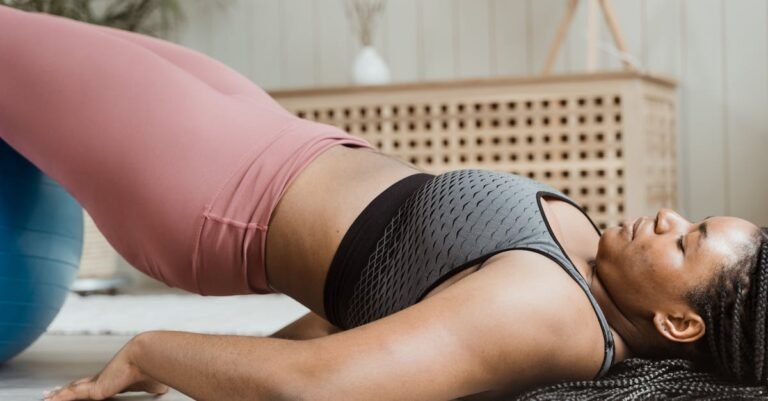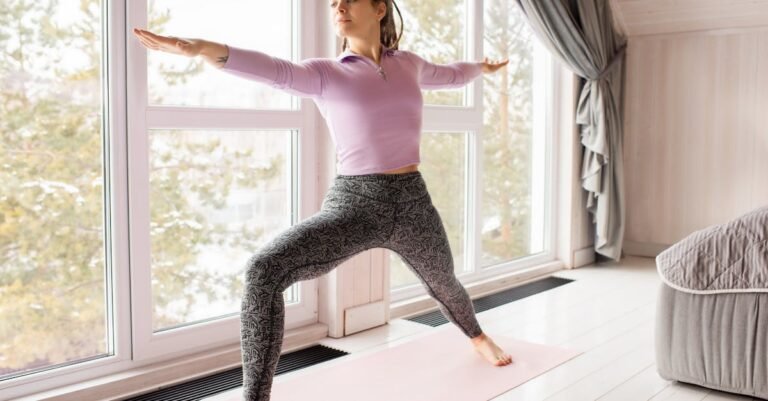Ever feel like your muscles are tied in knots? Maybe after trying a new workout, spending hours hunched over a computer, or even just sleeping funny? Yeah, that annoying soreness and stiffness can really put a damper on things. You just want to feel *good* again, move easily without wincing. Well, there’s a simple tool lots of people use right at home to help with that: the foam roller. It might look like a simple piece of foam, but it can be your secret weapon for recovery. In this article, we’ll break down what foam rolling is all about, why it’s worth trying, and give you a super easy, beginner-friendly routine you can start doing today. Get ready to learn how to roll away some of that tightness and feel better!
What’s This Foam Rolling Thing Anyway?
Okay, so what exactly *is* foam rolling? Imagine giving your muscles a deep massage, but instead of paying someone else, you do it yourself using a cylinder made of dense foam. That’s pretty much it! You use your own body weight to roll specific muscles over the foam roller. Think of it like using a rolling pin on tight, lumpy dough to smooth it out. Foam rolling works on your muscles and the connective tissue around them (called fascia). Sometimes, little ‘knots’ or tight spots (people sometimes call these ‘trigger points’) can form in these tissues, causing soreness or limiting how well you can move. Rolling helps to loosen these spots up.
Why Bother Rolling? The Awesome Payoffs
So, why should you spend time rolling around on a piece of foam? Good question! The biggest win is usually feeling *less sore*. You know that day-after-workout ache? Foam rolling can help dial that down. It can also help you become more flexible. If your muscles are tight, you can’t move as freely. Rolling can help loosen things up so you can bend, reach, and twist more easily. Think about it: maybe bending down to tie your shoes feels like a struggle sometimes. Regular rolling could make simple movements like that feel way smoother. It’s all about helping your body recover better so you feel more comfortable day-to-day, whether you’re an athlete or just someone who wants to feel less stiff.
Picking Your Partner: Choosing the Right Foam Roller
Walk into a store or look online, and you might see a bunch of different foam rollers – long ones, short ones, smooth ones, bumpy ones, hard ones, soft ones. Whoa, right? Don’t sweat it! For beginners, it’s usually best to start simple. A standard, medium-density roller without too many crazy bumps is often a great starting point. It’s firm enough to do the job but not so hard that it feels unbearable. A longer roller (around 36 inches) gives you more surface area and stability, which is nice when you’re learning. As you get used to it, you might explore other types, but a basic one is perfect for getting started.
Before You Roll: Quick Tips for Success
Alright, you’ve got your roller, you’re ready to go. Hold up! Just a few quick pointers first. It’s often helpful to be a little warm before you start, so maybe roll *after* a workout or after a few minutes of light movement like walking around. When you’re rolling, breathe! Holding your breath makes your muscles tense up, which is the opposite of what you want. Inhale deeply, and exhale slowly as you roll over tender spots. Go *slowly*. Racing back and forth won’t do much good. Slow, controlled movements let your muscles relax into the pressure. And super important: listen to your body. Avoid rolling directly over bones or joints (like your kneecap or spine). Stick to the fleshy muscle parts.
Your First Roll Call: The Beginner Routine
Ready to try it? Here’s a simple routine focusing on common tight spots. Spend about 30-60 seconds on each area per side. Remember to go slow and breathe!
- Calves: Sit on the floor with your legs straight out. Place the roller under one calf. Use your hands behind you for support and lift your hips off the floor. Roll slowly from your ankle up towards (but not behind) your knee. Rotate your leg slightly in and out to hit different spots. Switch legs.
- Hamstrings (Back of Thighs): Sit with the roller under your thighs. Support yourself with your hands behind you. Roll slowly from just above the back of your knees up to your glutes. You can do one leg at a time for more pressure if needed.
- Glutes (Butt Muscles): Sit on the roller with one cheek. Bend that leg and cross the ankle over the opposite knee (like a figure-four stretch). Lean slightly into the side you’re rolling, supporting yourself with your hands. Roll gently over the glute area. Switch sides.
- Quads (Front of Thighs): Lie face down, propping yourself up on your forearms like you’re doing a plank. Place the roller under the front of one thigh. Roll slowly from just above your knee up towards your hip. Keep your core tight! Switch legs.
- Upper Back: Lie on your back with the roller under your shoulder blades, perpendicular to your spine. Bend your knees, feet flat on the floor. Support your head with your hands (don’t pull on your neck!). Lift your hips slightly and roll slowly up and down between your mid-back and the top of your shoulders. *Avoid rolling onto your lower back or neck.*
Ouch! Good Pain vs. Bad Pain
Let’s be real, foam rolling isn’t always going to feel like a gentle tickle. When you hit a tight spot, it might feel uncomfortable or tender. That’s usually okay – think of it as a “good hurt,” like the feeling during a deep stretch. It means you’re likely finding a spot that needs some attention. However, you should *never* feel sharp, shooting, or unbearable pain. If you do, stop immediately or adjust your position to put less pressure on that spot. Foam rolling is about helping your muscles relax, not torturing them! Listen to your body; it knows best.
Making it Stick: Fitting Rolling into Your Life
Like anything new, the trick is making foam rolling a habit. You don’t need to spend an hour doing it every day! Even 5-10 minutes a few times a week can make a difference. When’s the best time? Lots of people like to roll after a workout as part of their cool-down. Others find it relaxing to do before bed. Hey, you could even do it while watching your favorite show! The key is *consistency*. Just doing it regularly, even for short bursts, is way better than one super long session every few weeks. Find a time that works for *you* and try to stick with it. Your muscles will thank you!
So, there you have it! Foam rolling isn’t some complicated fitness secret; it’s a straightforward way you can help your own body feel better right at home. We’ve covered what it is – basically a self-massage tool – and why it’s useful for easing muscle soreness and improving how well you move. Remember those simple tips: start with a basic roller, go slow, breathe, and listen to your body (especially the difference between good discomfort and bad pain!). The beginner routine gives you a great starting point for hitting common tight spots. The best part? It doesn’t take much time. Just a few minutes regularly can help you feel less stiff and achy. Give it a try and see how a little rolling can make a big difference in your recovery!










